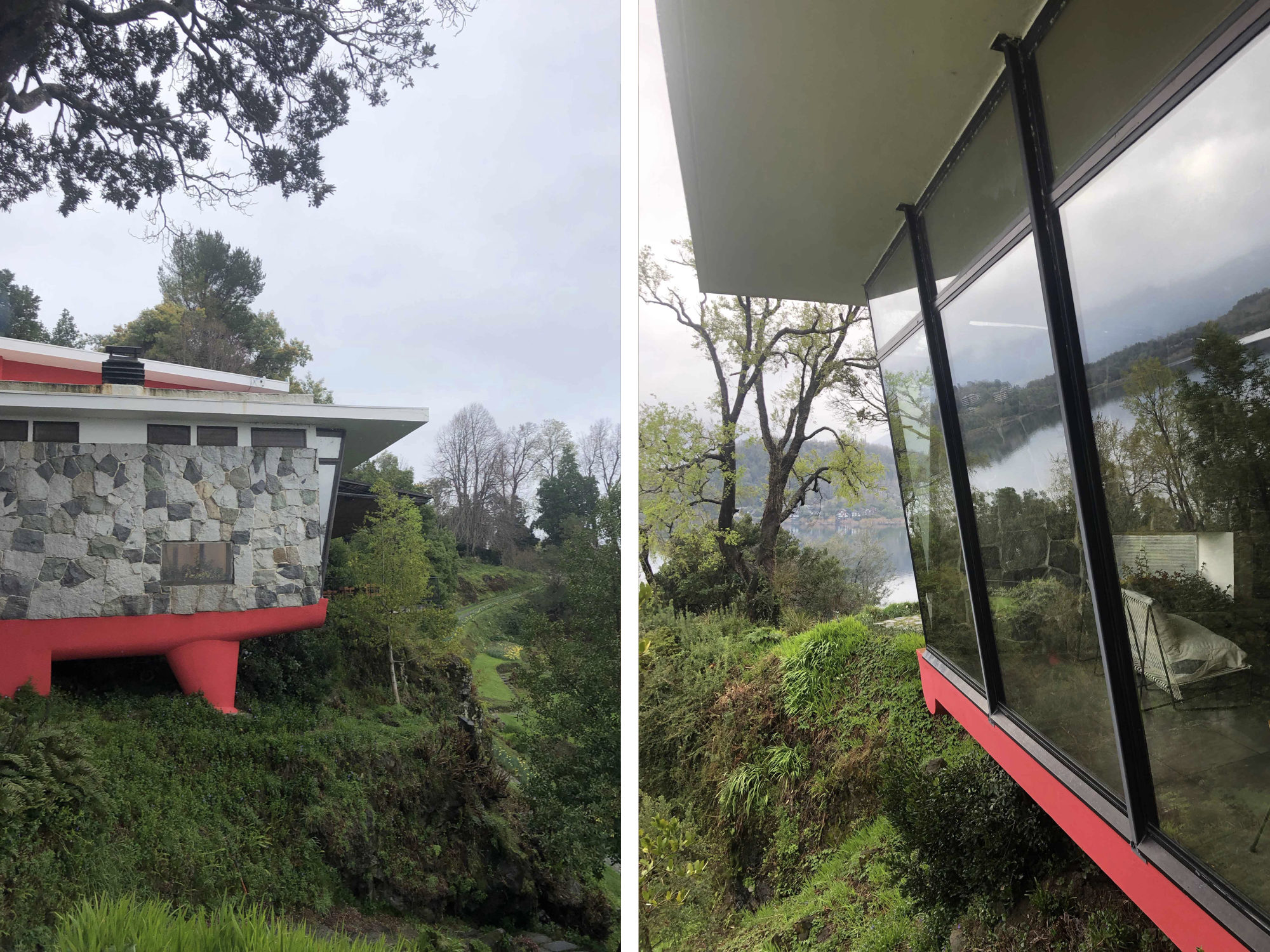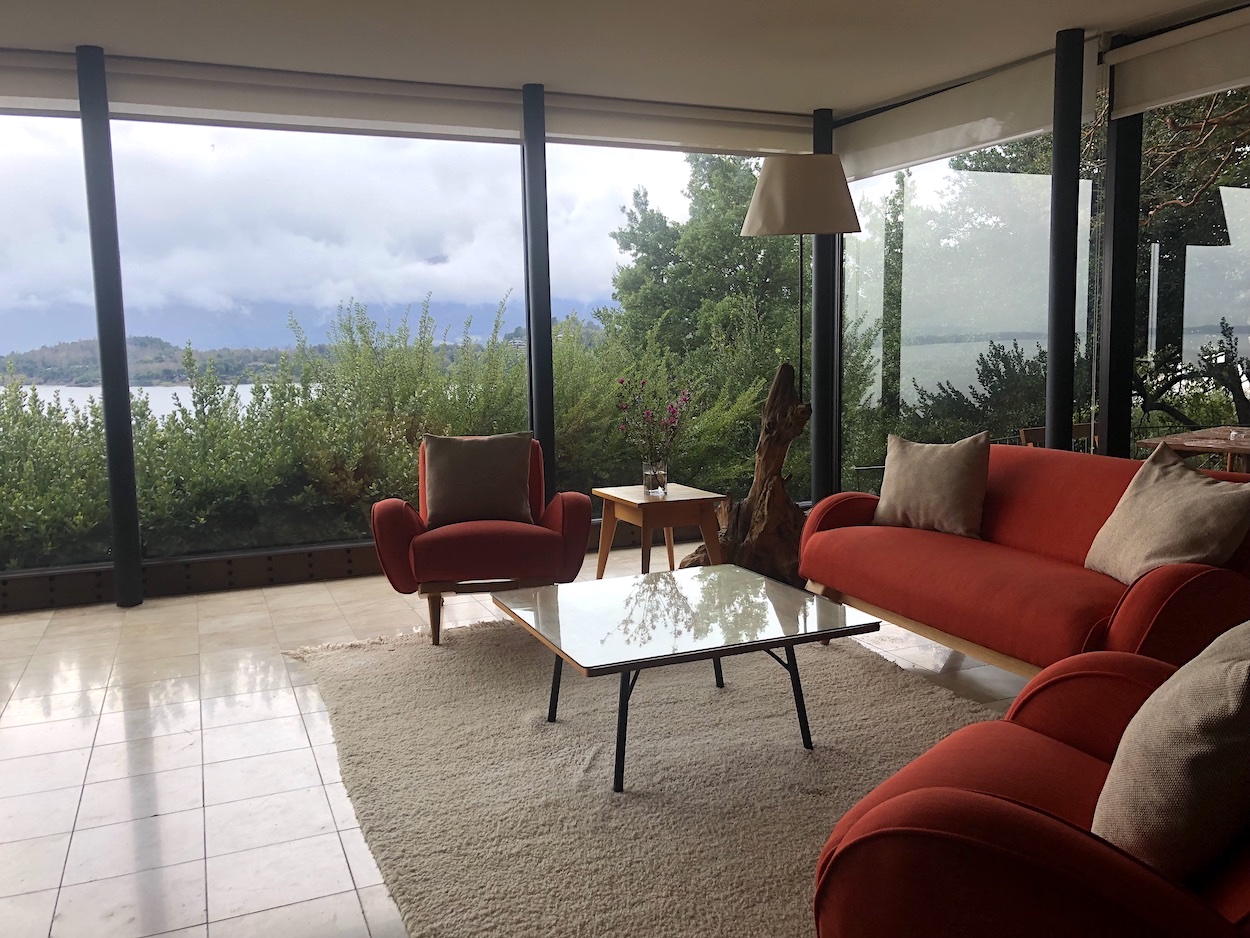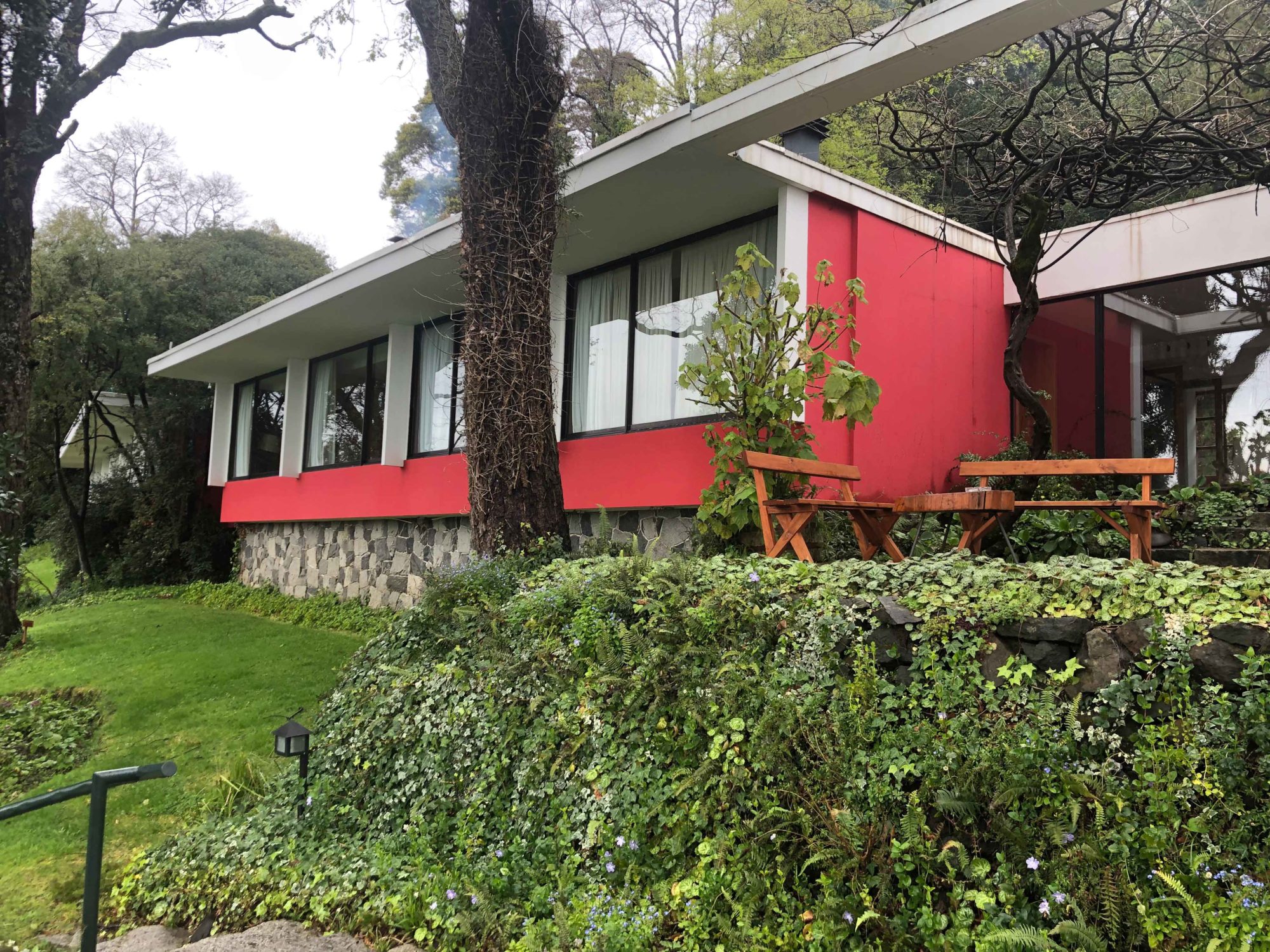It was the wood that got me. There were thick slabs of it, sliced right down the middle, the bark still on its edges, and its grain waxed and polished to a deep luster. Each piece was as wide as my forearm and, standing together, they marched down the walls of the rooms in the Hotel Antumalal, high up in the Chilean Lake District, a two-hour drive from nearby Temuco. Rony Pollak, whose family owns the hotel, caught me in mid-caress. “We call it monkey wood,” she explained, pointing out the window to Villaricca Volcano. “My parents built this place and my father got the wood from the forests right there, under the volcano.” The panels, like pretty much everything else in this Bauhausian retreat accommodating up to 50 guests for summer hiking and fishing and winter skiing, have been maintained in the state they were first glimpsed when the Hotel Antumalal opened in 1950. Step inside and you are whisked back to a time when good design meant using simple materials in bold ways, opening oneself up to nature, and living in what Pollak calls “simple luxury.”
Lake Villarrica, along whose shores the hotel’s 12 acres of gardens stretch in layer after layer of green shades and beds of flowers, became a vacation destination in the early 1940s. Pollak’s mother, Catalina, and her grandmother, Davita, ran a tearoom there, while her father, Guillermo, took guests out on the lake. One day in 1944, the then-president of Chile, Gonzalez Videla, visited, and Guillermo convinced him enough of the place’s charm and potential that the president helped him find a loan to build a hotel. The Pollaks hired the young architect Jorge Elton, a student of Frank Lloyd Wright, and the hotel became his major work. “They spent a lot of time in a boat on the lake, looking at the site, sketching it,” Pollak recalls.
Hotel Antumalal has remained a family business. Pollak, trained as a landscape architect, now guides hotel operations, while her children provide design advice and help with management and logistics. New resorts have grown up around the lake, but the Pollaks have decided to keep to what they have. Pollak shivers when she talks about “this direction our town has taken.” From her perspective, the Antumalal works the way it is: “We found a good upholsterer and we have him recover the furniture. Of course, we redid the bathrooms, and painted some of the rooms to freshen them up. But we will never move walls and we stay true to what is here. Once we had a decorator come in to give us advice. She told us to take down the historic photographs of the hotel and all the guests that have come here and put up a big mirror instead. We sent her packing.”
You can understand Pollak’s attachment to those photographs of a young Queen Elizabeth and her husband, Prince Philip; Neil Armstrong; James Stewart; and Barry Goldwater, all of whom have been guests. Herbert F. Johnson Jr., the businessman who made Johnson Wax into a major global corporation and had Frank Lloyd Wright do both his headquarters and home in Wisconsin, liked fishing here so much he had Elton design a separate little house for him on the property. You can now rent it as the equivalent of a luxury suite or family vacation compound.
Removed from the rest of the world, the hotel includes a low-slung bedroom wing whose base Elton emphasized by painting its beams a deep red. Step into the lobby, and you are cocooned in wood, handmade brick, and stone under low ceilings that direct your eyes to the view, where the lake spreads out past walls of glass. Half a level down is the den with its well-used fireplace, low banquettes with colorful pillows, and more expanses of glass, some of them leaning out over the steep hillside. A dining room opens up to a terrace, furnished with chairs of Elton’s own design, where you are likely to be served local quinoa with vegetables grown in the gardens and hothouses on the property. The spa down the hill is the only completely new structure Pollak and her children have built on the property. Based on the remains of an unfinished concrete pavilion, its curving walls enclose a heated pool and a sauna, all with more views out to that body of water fringed with woods and shadowed by the volcano.
It is your own bedroom, though, where you really want to be. Except for the private houses on the property (including the family compound) that Pollak has turned into suites, each of the bedrooms is a modest rectangle. Wood walls and floors, beige and gray bedcoverings, chairs and chests that, like much else in the hotel, have a Scandinavian sensibility, and, as always, that view, framed by a perfectly proportioned window, provide you with the sense of being in a cross between a hermit’s cell and the most luxurious ski lodge you could possibly imagine.
“I don’t know about feng shui or any such theories,” says Pollak, “but whatever it is, this place has that sense of well-being. Maybe it is the water that flows from the waterfall under the lobby into a little stream and all the way to the lake. Maybe it is just this place.” Or, maybe it is just good design: materials from the surroundings, used for their potential to express nature; simple and abstract frames that let the outdoors itself come in; space that flows around to let you feel at home in public areas, and closed down to make you feel cozy in your bedroom; details and surfaces that invite you to touch and caress; and a landscape that takes the natural setting and curves and layers it into rhythms of green, picked out by flowers.
“Our philosophy is to change without changing,” explains Pollak. “We make sure that we meet all the standards of the modern age, but in a way that fits.”



